When is necessary to have a laminectomy?
Generally, it is needed when bony overgrowths within the spinal canal begin narrowing the space available for the person’s spinal cord and nerves and cause weakness, pain, or numbness that can affect arms or legs. However, doctors may recommend this procedure for other conditions such as:
1.When medication or physical therapy fails to improve the symptoms
2.The person has muscle weakness or numbness that makes walking or standing difficult.
3.The person experiences loss of bowel or bladder control.
4.Existing signs of spinal stenosis or possible signs of a herniated disk.
5.The person is suffering from pressure on the spinal cord or nerve roots that are caused by spinal stenosis.
Laminectomy cost in Iran

The price of a laminectomy surgery can be different based on some factors such as your surgeon or the hospital, however, it is more affordable compared to other countries due to the low currency of Iran. Therefore, the most important reason for the popularity of Iran for medical surgeries is that international patients can get high-quality surgery at a reasonable cost.
How is laminectomy performed?
Before starting the surgery, the patient will be asked to remove their clothes and will be given a gown to wear, and an IV line may be started in the arm or hand. Once the patient is under anesthesia, a urinary drainage catheter may be inserted. After that, the patient will be positioned either on the belly or on the side of the operating table.
At the beginning of the procedure, the surgeon makes an incision over the selected vertebra and spreads the muscles apart then eliminates the bony arch of the posterior part of the vertebra in order to ease the pressure on the nerves in the area. This procedure may include eliminating bone spurs or growths or eliminating part or all of a disk.
In some cases, an instability of the spine might be detected and may need a posterior fusion of the spine. In the fusion procedure, a bone graft is taken, or a synthetic bone graft is used around the spine to create a solid bony fusion across the unstable segments. Usually, titanium screws and rods are placed in order to raise stability, and sometimes the lumbar disc is reduced and replaced with a plastic cage filled with bone graft.
Types of laminectomy
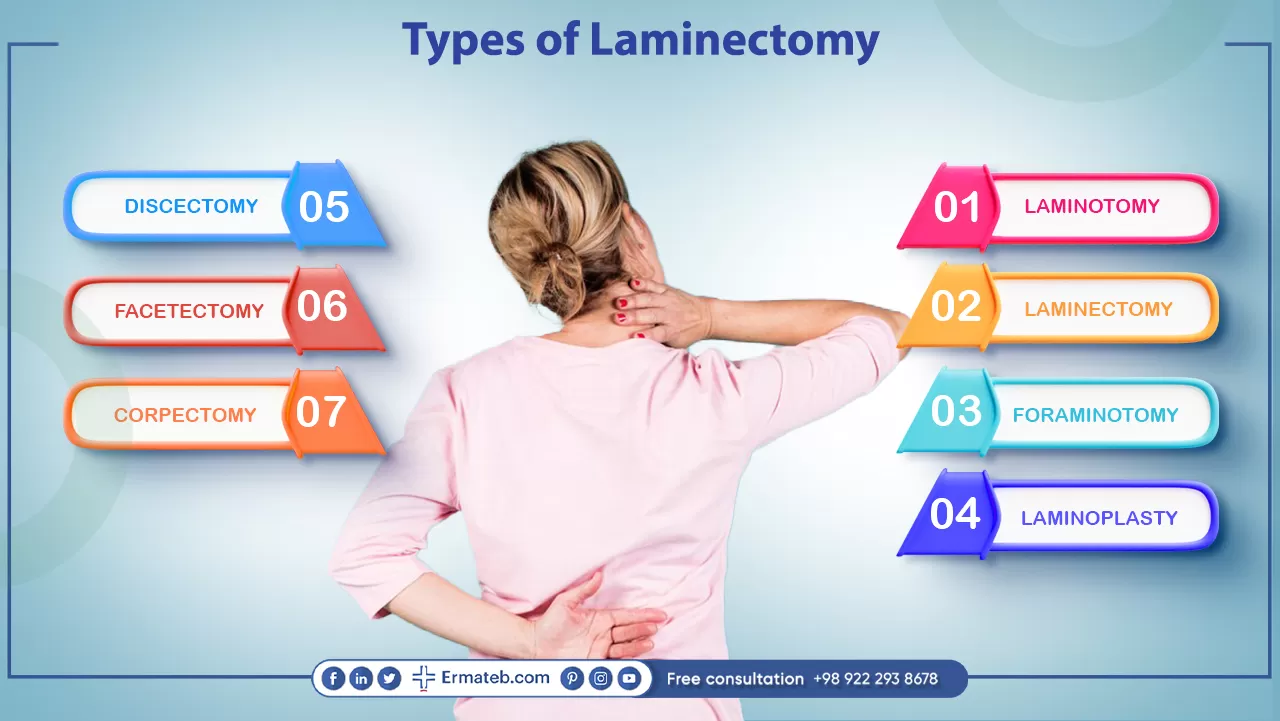
There are several types of laminectomy including:
1.Laminotomy:
In this operation, a small portion of the lamina and ligaments is eliminated, usually on one side. The surgeon leaves the natural support in its place, which reduces the chance of spinal instability. However, in some cases, an endoscope is used which allows for a smaller and less invasive incision.
2.Laminectomy:
This surgery includes eliminating the entire bony lamina, a part of the enlarged facet joints, and the thickened ligaments overlying the spinal cord and nerves.
3.Foraminotomy:
In this surgery, the surgeon eliminates the bone around the neural foramen, where the nerve root exits the spine to relieve the pressure which is caused by the degeneration of a disk that has caused the height of the foramen to collapse and pinch a nerve.
4.Laminoplasty:
In this method, the surgeon expands the spinal canal by cutting the laminae on one side and then swinging them open like a door. However, this method is used only in the neck area.
5.Discectomy:
This operation is done to eliminate a portion of a bulging or degenerative disc to relieve pressure on the nerves.
6.Facetectomy:
This is a surgical procedure to eliminate the pressure of the spinal nerve roots near the facet joint when conservative medical treatment fails to control pain and other signs of facet disease
7.Corpectomy or Vertebrectomy:
This procedure includes removing part or all of the vertebral body as a way to decompress the spinal cord and nerves. Usually, corpectomy is performed in association with some form of discectomy.
Laminectomy recovery stages
In the first stage after your operation, you’ll be taken to the recovery room for observation. Once your breathing, blood pressure, and pulse are stable and you’re alert, you’ll be taken to your hospital room. This procedure usually requires the patient to stay in the hospital for one or more days. You’ll most likely start getting out of bed and walking the evening of the operation, as your pain will be controlled with certain medicines so you can take part in the exercise plan given to you by the doctor.
In the second stage, once the patient is at home, it is essential to keep the surgical incision area dry and clean. In addition, the healthcare provider will give the patient specific bathing instructions. In the end, the surgical staples or stitches will be eliminated during the next checkup.
By following some tips, you may be able to speed up the healing process. For instance, the first thing you can do is to follow your doctor’s instructions like taking the medicines prescribed, or not taking certain drugs since they raise the chance of bleeding.
You should rest as much as you can. You may feel like resting more often after your procedure, which is normal. You must not lift heavy objects for at least 14 days after your surgery, and most importantly, don’t lift anything over your head.
You should limit your physical movement and refrain from bending at the hips or twisting at the waist. Instead, you can bend your knees and keep your back straight when picking something up off the floor.
After the surgery, you should change your sleeping habits. When you lie on your back, place 2 or 3 pillows under your knees to raise them. When you lie on your side, you should bend your knees and use a small pillow under your neck and head, as these positions will reduce the strain on your neck, shoulders, neck, and arms. However, sleeping on the stomach is not recommended.
You must not sit for longer than 15 to 20 minutes at a time. You should keep your back straight by sitting on a firm chair, and also keep your knees bent and slightly higher than your hips for at least the first 3 weeks after your procedure.
Apply a warm compress on the surgery area since it is known for its ability to help reduce pain and muscle spasms. Carefully wash the wound with water and soap. Dry the area and put on clean bandages as directed. Make sure the bandages remain clean, and change them when they get dirty or wet.
If you are experiencing any of the following, visit your doctor immediately:
1.Fever
2.Swelling, redness, bleeding, or other drainage from the incision site
3.Intense pain around the incision site
4.Numbness in your back, legs, or buttocks
5.Trouble urinating or loss of control of your bowel or bladder
What are the risks and advantages of laminectomy?
Some of the pros of laminectomy are:
1.This procedure can improve the quality of life for individuals who have intense symptoms that interfere with daily activities or mobility.
2.This procedure can prevent further damage to your spinal cord or nerves that could lead to loss of function or permanent disability.
3.This procedure can be combined with other procedures, like spinal fusion, to stabilize the spine and prevent more problems.
Common complications and risks after laminectomy may include:
1.Bleeding
2.Infection
3.Blood clots in the lungs or legs
4.Spinal cord or nerve root injury
5.Wound pain
6.Ligament, muscle, or nerve damage
7.A blood clot in your legs
8.A possible infection in the surgical site
9.Difficulty breathing as an allergic reaction to the medications or anesthetic
10.Nerve or blood vessels in the area of operation may be injured, which in turn can cause numbness or weakness.
complications that may occur in rare cases include:
1.Nerve root injuries and dural tears. However, these complications are more common among older adults.
2.Cerebrospinal fluid (CSF) can leak out of tears in the dura mater, which is a serious problem that can lead to more complications, such as dizziness, headaches, and seizures.
3.Unsuccessful treatment, which can lead to recurring symptoms
4.Infection in the surgical site
5.Damage to the muscles, nerves, or tendons that stabilize the spine
Arrange your trip to undergo laminectomy in Iran
Iran has the most experienced surgeons worldwide and therefore it provides international patients with the best results possible from laminectomy surgery, and it can ensure patients that they will go back to their everyday life in no time by having laminectomy in Iran.
To arrange your trip and get your medical treatments in Iran such as laminectomy or herniated disk surgery, all you have to do is contact us via WhatsApp, or you can also fill out the online form on our website.


 Arabic
Arabic
 German
German
 Persian (Farsi)
Persian (Farsi)
 Russian
Russian
 Beauty
Beauty

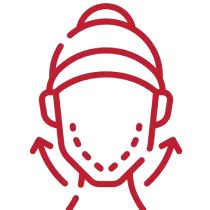

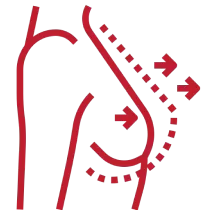
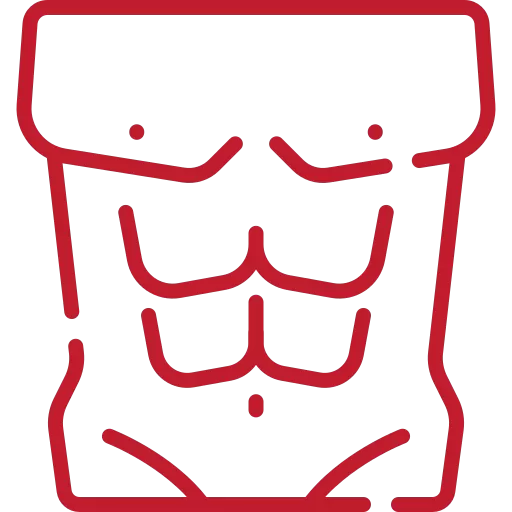

 Medical
Medical



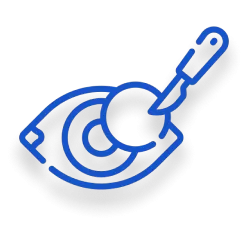
 Hotels
Hotels
 Hospitals
Hospitals






























![Frequently asked question about [name]](/v2tem/images/pages/service/faq-image.webp)
